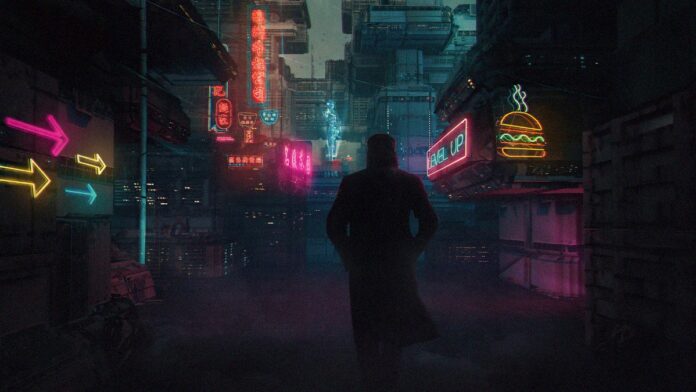Artificial Intelligence (AI) is transforming the world at an unprecedented rate. The development of AI has not only impacted industries and businesses but has also changed the way we live, work, and interact with one another. One of the latest AI-driven concepts that have emerged in recent years is the concept of an “Artificial City” or an “Artificial Society.” These terms refer to a hypothetical society where all the activities and interactions are governed by AI. In this article, we will explore the concept of an Artificial City and its potential implications, benefits, drawbacks, challenges, and the Future of the Artificially Intelligence Society.
Contents
What is an Artificial City?
An Artificial City is a city or a society where all the activities, interactions, and decision-making processes are governed by AI. This means that every aspect of life, from transportation and energy to education and healthcare, will be controlled and managed by AI algorithms. The concept of an Artificial City is not a new one. Science fiction writers and futurists have been imagining such a society for decades. However, recent advancements in AI technology have made this concept more plausible than ever before.
Artificial Cities and the Metaverse
Artificial Cities and the Metaverse are two separate concepts, but they are related in that both involve the use of digital technologies to create virtual environments.
An Artificial City is a real-world city that is designed and managed using advanced technologies such as AI, IoT, and big data analytics. These cities are envisioned as highly efficient and sustainable urban environments, where every aspect of urban life is optimized through the use of data and advanced algorithms.
The Metaverse, on the other hand, is a term that has been used to describe a virtual world that is built on top of the internet. The Metaverse is a collective virtual shared space that is created by the convergence of physical and virtual reality, and it is envisioned as a place where people can interact with each other and digital objects in a seamless, immersive way.
While Artificial Cities and the Metaverse are two distinct concepts, there is some overlap between the two. For example, it is possible that an Artificial City could be integrated with the Metaverse, allowing residents to interact with each other and digital objects in a virtual environment that is seamlessly connected to the real world. In this way, the Metaverse could be used to enhance the social and cultural aspects of an Artificial City, while the Artificial City could provide the physical infrastructure and services needed to support the Metaverse.
Overall, while the development of Artificial Cities and the Metaverse is both exciting trends in the world of technology and urban planning, it remains to be seen how they will evolve and how they will be integrated in the future.
The Benefits of an Artificial City
Proponents of the Artificial City concept argue that it could bring about several benefits. One of the primary benefits is efficiency. AI algorithms are capable of processing vast amounts of data and making decisions based on that data much faster than humans. This could lead to a more efficient use of resources, which could in turn lead to cost savings and a more sustainable society.
Another potential benefit of an Artificial City is safety. AI algorithms can monitor and analyze data in real time, which could help prevent accidents and other safety hazards. For example, AI could be used to manage traffic flow and prevent accidents on the roads. It could also be used to monitor public spaces and prevent crime.
Drawbacks of an Artificial Society
While proponents of an Artificial Society may argue that it could bring about many benefits, there are also significant drawbacks that need to be considered.
One of the primary drawbacks is the potential loss of human agency. In an Artificial Society, all decision-making would be in the hands of AI algorithms. This could lead to a loss of control and autonomy for humans. It could also lead to a lack of creativity and innovation, as AI algorithms would be making all the decisions.
Another potential drawback is the impact on social connections and community. In an Artificial Society, all interactions would be governed by AI algorithms. This could lead to a sense of isolation and disconnection from one another. It could also lead to a lack of diversity and cultural exchange, as all interactions would be mediated by the same algorithms.
Finally, there is the potential for unintended consequences. AI algorithms are only as unbiased as the data they are trained on. If the data used to train the algorithms is biased in any way, the algorithms will also be biased. This could lead to unintended consequences and unforeseen outcomes, which could be difficult to predict or control.
The Challenges of an Artificial City
Despite the potential benefits, there are also several challenges associated with an Artificial City. One of the biggest challenges is privacy. In an Artificial City, all data and information would be monitored and analyzed by AI algorithms. This raises concerns about how that data would be used and who would have access to it. It also raises concerns about the potential for surveillance and loss of privacy.
Another challenge is the potential for bias. AI algorithms are only as unbiased as the data they are trained on. If the data used to train the algorithms is biased in any way, the algorithms will also be biased. This could lead to unfair treatment and discrimination.
Finally, there is the question of control. In an Artificial City, all decision-making would be in the hands of AI algorithms. This raises questions about who would be responsible for the decisions made by these algorithms and how they could be held accountable.
Future of Artificially Intelligence Society
The future of Artificial Cities is a topic of significant interest and debate among urban planners, policymakers, and technologists. As cities around the world continue to grow in size and complexity, there is a growing need for innovative solutions to address the challenges of urbanization. Artificial Cities, which are designed and managed using artificial intelligence (AI) and other emerging technologies, offer one possible solution.
An Artificial City is a city that is designed and managed using advanced technologies such as AI, the Internet of Things (IoT), and big data analytics. These cities are envisioned as highly efficient and sustainable urban environments, where every aspect of urban life is optimized through the use of data and advanced algorithms.
There are several potential benefits to the development of Artificial Cities. For one, they have the potential to be more sustainable and environmentally friendly than traditional cities. AI algorithms could be used to optimize energy usage, reduce waste, and lower greenhouse gas emissions. Additionally, Artificial Cities could be designed to be more livable and comfortable for residents, with features such as smart buildings, public transportation systems, and advanced healthcare services.
Another potential benefit of Artificial Cities is their ability to improve public safety and security. AI algorithms could be used to monitor public spaces, detect potential threats, and respond quickly to emergencies. They could also be used to optimize traffic flow and reduce congestion, making cities safer and more efficient for residents.
Despite these potential benefits, there are also significant challenges and risks associated with the development of Artificial Cities. One concern is the potential loss of privacy and autonomy for residents. AI algorithms would need to collect and analyze vast amounts of data about residents to optimize urban systems and services. This could raise significant privacy and security concerns, particularly if this data were to fall into the wrong hands.
Another concern is the potential for unintended consequences. AI algorithms are only as unbiased as the data they are trained on. If the data used to train the algorithms is biased in any way, the algorithms will also be biased. This could lead to unintended consequences and unforeseen outcomes, which could be difficult to predict or control.
In addition, there is the risk of job displacement as AI and automation technologies continue to advance. While Artificial Cities could create new jobs in the tech sector, they could also lead to job losses in traditional sectors such as transportation and manufacturing.
Despite these challenges, the future of Artificial Cities is likely to be shaped by the ongoing evolution of AI and other emerging technologies. As cities continue to grow and face new challenges, the development of Artificial Cities may become an increasingly attractive solution for urban planners and policymakers. However, it will be important to carefully consider the social, ethical, and cultural implications of such cities, and to ensure that human values such as privacy, autonomy, and diversity are not lost in the process.
Conclusion
The concept of an Artificial City raises many interesting and complex questions about the role of AI in society. While there are certainly benefits to an Artificial City, such as increased efficiency and safety, there are also many challenges that need to be addressed. As AI technology continues to evolve and shape our world, we must consider these questions carefully and work to ensure that the benefits of AI are realized while minimizing its potential risks. Ultimately, the success of an Artificial City will depend on our ability to strike a balance between efficiency, safety, privacy, and control.
In conclusion, while the concept of an Artificial Society may seem appealing to some, it is important to consider the potential drawbacks and risks associated with such a society. While AI technology has the potential to bring about many benefits, it is important that we carefully consider the social, ethical, and cultural implications of such a society. Ultimately, the success of an Artificial Society will depend on our ability to strike a balance between the benefits and drawbacks of AI and to ensure that the human values of autonomy, creativity, and diversity are not lost in the process.
Sources
- Batty, M. (2017). The new science of cities. MIT Press.
- Sadowski, J., & Selinger, E. (2019). The new governors: The people, rules, and processes governing online speech. Knight Foundation.
- Brynjolfsson, E., & McAfee, A. (2017). The future of work: Robots, AI, and automation. Brookings Institution Press.
- Brynjolfsson, E., & McAfee, A. (2014). The second machine age: Work, progress, and Prosperity in a time of brilliant technologies. W. W. Norton & Company.
- Kellner, D. (2018). The digital spectacle: The significance of new media in everyday life. Routledge.
- Floridi, L. (2019). The logic of information: A theory of philosophy as conceptual design. Oxford University Press.
- Ritzer, G. (2018). The McDonaldization of society 8. Pine Forge Press.
- Tegmark, M. (2017). Life 3.0: Being human in the age of artificial intelligence. Knopf.
- Yoon, Y. J., Kim, K. H., Lee, J. M., & Kang, Y. S. (2019). What are the effects of artificial intelligence on city planning? A systematic review. Sustainability, 11(8), 2312.
FACT CHECK: We strive for accuracy and fairness. But if you see something that doesn’t look right, please Contact us.
DISCLOSURE: This Article may contain affiliate links and Sponsored ads, to know more please read our Privacy Policy.
Stay Updated: Follow our WhatsApp Channel and Telegram Channel.














Great post! For unparalleled market insights and research resources tailored specifically to the market research industry, explore Stats N Data (https://www.statsndata.org). Our platform offers invaluable market intelligence across diverse domains, empowering businesses with actionable insights that drive success. Looking forward to more engaging content from you!